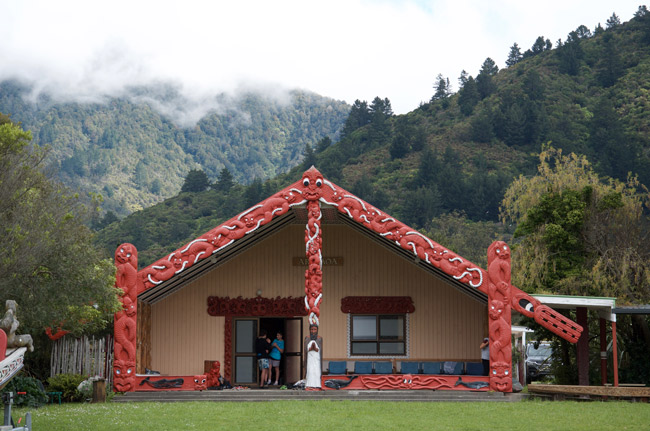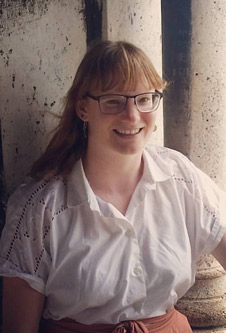
The University of Otago's Science Wānanga are three-day, hands-on experiences for Māori secondary students. Staying on marae with university students, scientists and kaumatua, students get to hang out and do real science in their local communities.
The Otago Science Wānanga are one of the jewels in the University of Otago's crown. The wānanga aims to inspire Māori in isolated communities through science. Department of Chemistry Assistant Research Fellow Marina Roxburgh reflects on her experiences of the programme, which were recently published in Science Magazine.

Associate Professor Marina Roxburgh.
I am out the back of the wharenui (meeting house), burning magnesium and iron powders in a small fire when the conversation takes a shift. I have travelled for six hours to stay at Waikawa marae (meeting grounds) in rural New Zealand, working with 50 Maori students from the local iwi (tribe). By now, we have all slept in the same room for a week, shared the cleaning and cooking of meals, and spent days carrying out tests on the water quality of the local river. It is the final night of the wānanga (education, meeting) and a few eager students are helping me safely burn the last of our chemicals that I had used to show how fireworks are made.
“Why did you come here,” asks one student.
“We were asked to by your iwi, and funded by the University of Otago.”
“But why us,” she asks.
“Because you are worth it,” I reply.
To me, that is the essence of the Science Wānanga programme, showing students that they are worth investing in: anyone can do science anywhere, on a waka, out the back of the kitchen, or in a rundown washhouse. The programme aims to inspire and encourage Māori students to take an interest in science, but it is through the nature of the programme that I believe we truly accomplish this. We hope to show students that you do not need a fancy lab or flash textbooks, all you require is an interest in the world around you and how things work: from the mechanical to atomic level.
" I hope to make science not only accessible to rural Māori, but also show them that science isn't always carried out in a lab with a white coat on, science is all around us ..."
Although the programme aims to inspire and encourage Māori students to take an interest in science, scientists such as myself learn a great deal during our stay. Māori traditions of caring for the environment have been passed on for hundreds of years, and through Science Wānanga I have gained a great deal of respect and understanding, encouraging me to learn Te Reo Māori and further educate myself. The relationship Māori have with their environment makes clear that these students already have the background they need to be fantastic scientists. We all have an obligation to invest in their education, and provide any additional support they need to reach their potential.
Before heading to this marae we had spent weeks designing a project that would fit with the local iwi, one that they wanted their tamariki (children) to deeply care about. Together we have scrambled up and down the banks of the river collecting samples of water and meticulously tested them for different trace chemicals. Through this investigation was interwoven the stories of the whenua (land) told by the iwi, giving significance to our work and motivation to the tamariki. We will return to the same place each year, forming a lasting relationship with the iwi and see the same tamariki. I hope to make science not only accessible to rural Māori, but also show them that science isn't always carried out in a lab with a white coat on, science is all around us in our everyday lives and works alongside mātauranga māori (traditional Māori knowledge).
To learn more about Science Wananga, click here.
